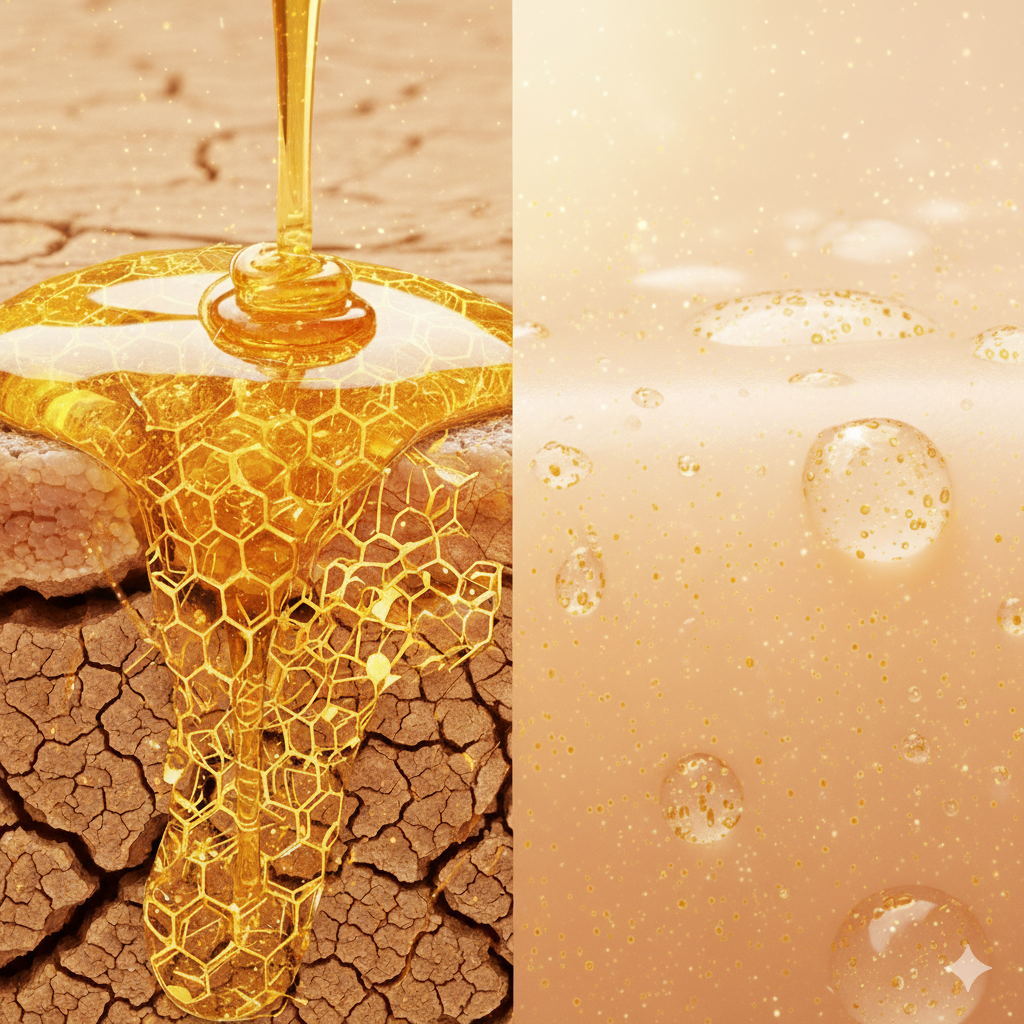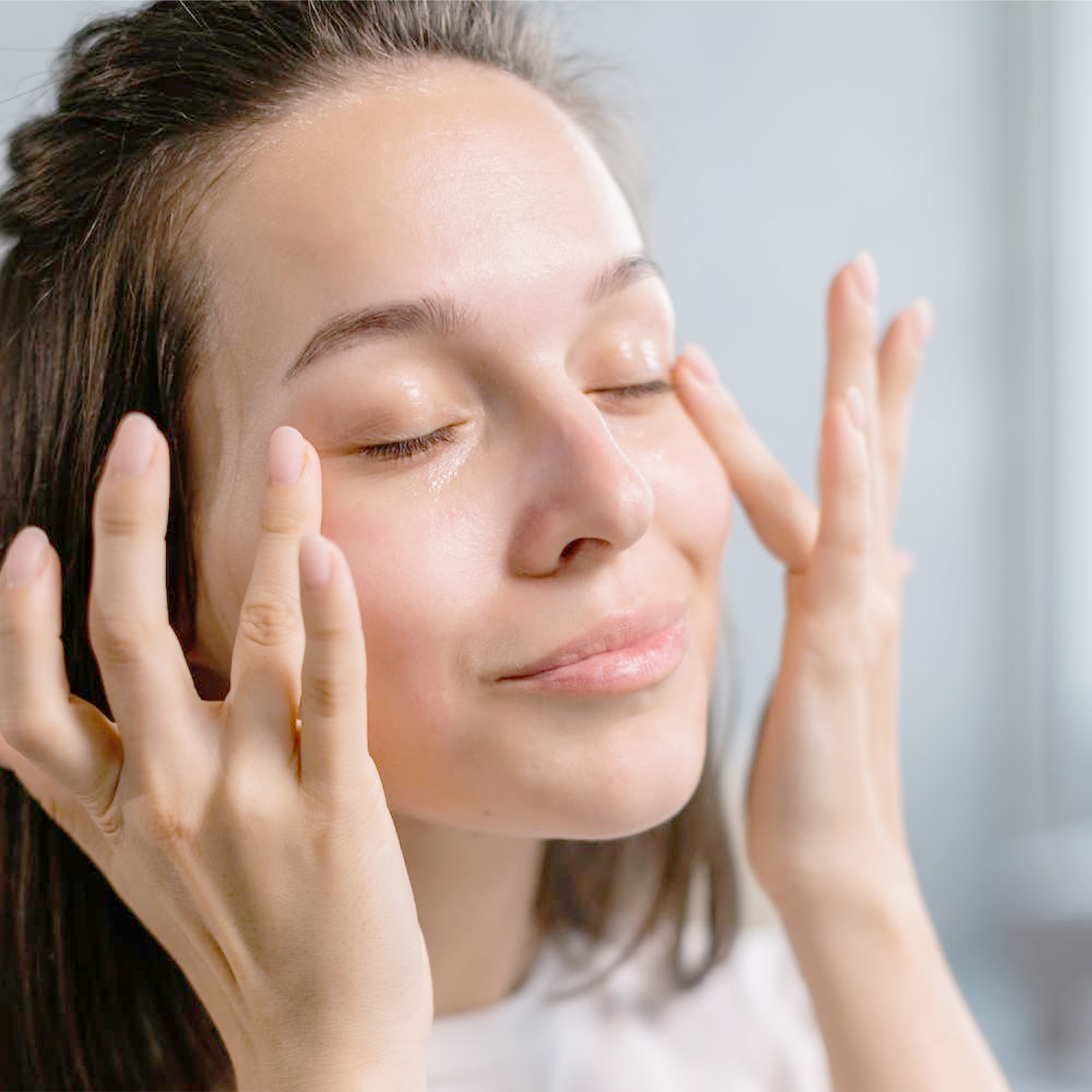In a world full of skincare buzzwords, “hydrating” and “barrier-repairing” products often seem interchangeable. Nearly every moisturiser, serum, or cream promises to “deeply hydrate,” “repair dry skin,” or “nourish your barrier”— but here’s the catch: hydration and barrier repair are two completely different skin functions, and confusing the two may be the very reason your skin isn’t healing, glowing, or improving the way you expect.
Whether you're dealing with persistent dryness, sensitivity, or even breakouts, understanding how hydration and barrier repair work, independently and together. It can radically improve how you care for your skin. In this guide, we’ll break down what each term really means, how they affect your skin, and how to build a routine that truly supports both.
Part 1: What Does Hydration Really Mean?
Let’s start with the basics.
Hydration, in the simplest sense, refers to water content in your skin. Just like every living thing needs water, your skin cells need water to function properly. When they’re dehydrated, your skin can look dull, feel tight, and show fine lines more prominently—even if you’re oily.
Hydration is often confused with moisture, but the two aren’t identical. While “moisture” is a broad term that can include oils and fats, hydration specifically means increasing water content in the outer layer of the skin (called the stratum corneum).
So, what hydrates your skin?
That’s where humectants come in.
Humectants: The Water-Attracting Heroes
Humectants are ingredients that draw water from the environment or from deeper layers of the skin into the surface. They give your skin that dewy, plump, fresh-out-of-a-facial look.
Common humectants include:
-
Glycerin
-
Aloe vera
-
Honey
-
Hyaluronic acid
-
Panthenol (Vitamin B5)
These are often found in lightweight serums, mists, or gel-based moisturizers. They’re especially helpful in humid climates, where they can pull moisture from the air—but they need a little help to do their job well (more on that later)
Part 2: What Is Barrier Repair?
While hydration is about giving your skin water, barrier repair is about keeping that water in—and keeping irritants out.
Your skin barrier, also known as the lipid barrier or acid mantle, is your skin’s first line of defense. It’s made up of lipids, ceramides, cholesterol, and proteins that form a protective seal over your skin. Think of it like your skin’s raincoat, when it's intact, it holds moisture inside and protects you from environmental aggressors like pollutants, bacteria, and harsh weather.
What happens when your barrier is damaged?
You may notice:
-
Increased sensitivity or stinging when applying products
-
Redness or flaking
-
Chronic dryness, even after moisturizing
-
Breakouts or inflamed patches
This damage can be caused by over-cleansing, using harsh exfoliants, sun damage, pollution, or even stress.
Barrier-Repairing Ingredients
To repair a damaged barrier, your skin needs emollients and occlusives—ingredients that mimic or support your skin’s natural lipids.
Emollients fill in micro-cracks in the skin’s surface, softening and smoothing.
Occlusives sit on top of the skin and form a physical barrier to lock moisture in and irritants out.
Common emollients:
-
Squalane
-
Jojoba oil
-
Ceramides
-
Fatty acids
Common occlusives:
-
Beeswax
-
Shea butter
-
Petrolatum (Vaseline)
-
Lanolin
Part 3: Hydration Without Barrier Repair? It’s Not Enough.
Here’s where many people go wrong: They keep layering on hydrating serums and wonder why their skin still feels dry or irritated.
If your barrier is compromised, water evaporates right out of your skin—no matter how much you hydrate it. This is called transepidermal water loss (TEWL), and it's a major culprit behind stubborn dryness and dehydration.
So while humectants are amazing at drawing water into your skin, they can’t hold it there without help. That’s why pairing hydration with barrier-repairing ingredients is essential, especially if your skin is showing signs of stress.
Part 4: The Ideal Skincare Routine—Hydration + Repair
Now that you understand the difference, here’s what an ideal balanced routine might look like:
Step-by-step:
-
Cleanse gently – Avoid harsh, foaming cleansers that can strip your barrier.
-
Apply a hydrating serum – Use products with humectants like hyaluronic acid, honey, or glycerin.
-
Seal it in with barrier-focused ingredients – Follow up with a moisturizer that includes emollients (like jojoba oil or shea butter) and occlusives (like beeswax or ceramides).
-
Protect your skin – Daily SPF helps preserve your barrier from UV damage.
You don’t need a 10-step routine, just products that serve specific, purposeful functions: hydrate, strengthen, and protect.
Part 5: Why This Matters for Problem Skin
Understanding hydration vs. barrier repair isn’t just for skincare nerds. It’s essential if you struggle with:
-
Eczema or psoriasis
-
Rosacea or sensitivity
-
Barrier damage from retinoids or exfoliants
-
Dry, flaking skin despite moisturizing
-
Acne-prone skin reacting to actives
In many of these cases, your barrier is likely compromised, and hydration alone won’t cut it. Rebuilding that barrier with the right lipids and protective ingredients can make a huge difference—not just in how your skin looks, but in how it feels.
So, Where Does a Product Like the Honey Biotics Intense Moisturiser Come In?
Once you've grasped how hydration and barrier repair work together, you’ll start to appreciate products that are intentionally formulated to support both.
The Honey Biotics Intense Moisturiser is one of those rare multitaskers.
It blends humectants, emollients, and occlusives—all in one formula:
-
MGO 570+ Manuka Honey: A natural humectant with antibacterial properties, perfect for calming irritation while drawing moisture into the skin.
-
Natural Vitamin E (D-Alpha Tocopheryl Acetate): A powerful antioxidant and emollient that helps repair skin and reduce inflammation.
-
Jojoba Oil: Mimics skin’s own sebum to restore moisture and reduce flaking.
-
Shea Nut Butter & Beeswax: Occlusive ingredients that form a breathable barrier to prevent water loss and shield from environmental damage.
-
Grape Seed Extract: Lightweight and rich in antioxidants to soothe and protect skin under stress.
This formula isn’t just about making your skin feel good temporarily—it’s designed to restore the long-term health of your skin barrier while deeply hydrating it. That’s what sets it apart from moisturisers that only address surface dryness.
Final Thoughts: Let Your Skin Work With You, Not Against You
Your skin is incredibly smart. It knows how to protect you—but sometimes it needs support.
By understanding the difference between hydration and barrier repair, you’re no longer just applying products and hoping they work. You’re giving your skin exactly what it needs, in the right order, with the right ingredients. And when you’re ready for a product that does both, without the fluff—reach for one that’s thoughtfully formulated with hydrating, healing, and protecting ingredients in balance.
Because the glow you’re looking for? It’s not just from water or oils—it comes from a strong, supported skin barrier that’s doing its job.
Want to learn more? Visit HoneyBiotics.com to find out how to achieve your best ever skin.




